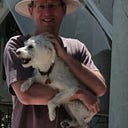Smith Goes All In, Declares Trump Responsible for January 6 Violence
In a hard hitting brief prosecutors directly accuse Donald Trump of being responsible for the violence on January 6th. They present it as part of the plan. Trump needed to disrupt the electoral vote count and so he did. The brief was filed in response to a Trump motion to “strike inflammatory allegations from the indictment.” Jack Smith’s response in the brief is that the truth is not inflammatory and telling it is necessary prove their case that Trump is responsible for the violence that day. The government argues Trump’s actions since January 6, praising the rioters, to include his association with particularly violent rioters with the “January 6, Choir.”
I’ll just quote from the brief, omitting citations, and the like, while adding some emphasis. You can read the brief here: https://storage.courtlistener.com/recap/gov.uscourts.dcd.258149/gov.uscourts.dcd.258149.140.0.pdf
On January 6, 2021, lives were lost; blood was shed; portions of the Capitol building were badly damaged; and the lives of members of the House and Senate, as well as aides, staffers, and others who were working in the building, were endangered. Yet publicly, the defendant has promoted and extolled the events of that day. While the violent attack was ongoing, the defendant told rioters that they were “very special” and that “we love you.” In the years since, he has championed rioters as “great patriots” and proclaimed January 6 “a beautiful day.” In this case, though, the defendant seeks to distance himself, moving to strike allegations in the indictment related to “the actions at the Capitol on January 6, 2021.” The Court should recognize the defendant’s motion for what it is: a meritless effort to evade the indictment’s clear allegations that the defendant is responsible for the events at the Capitol on January 6. Indeed, that day was the culmination of the defendant’s criminal conspiracies to overturn the legitimate results of the presidential election, . . . the defendant directed a large and angry crowd — one that he had summoned to Washington, D.C., and fueled with knowingly false claims of election fraud — to the Capitol to obstruct the congressional certification proceeding. When his supporters did so, including through violence, the defendant did not try to stop them; instead, he encouraged them and attempted to leverage their actions by further obstructing the certification . . .
Ultimately, the defendant’s three conspiracies culminated and converged when, on January 6, the defendant attempted to obstruct and prevent the congressional certification at the Capitol. One of the ways that the defendant did so, as alleged in the indictment, was to direct an angry crowd of his supporters to the Capitol and to continue to stoke their anger while they were rioting and obstructing the certification . . .
The indictment also alleges, and the Government will prove at trial, that the defendant used the angry crowd at the Capitol as a tool in his pressure campaign on the Vice President and to obstruct the congressional certification . . . the Government will establish through testimony and video evidence that after the defendant repeatedly and publicly pressured and attacked the VicePresident, the rioting crowd at the Capitol turned their anger toward the Vice President when they learned he would not halt the certification, asking where the Vice President was and chanting that they would hang him . . .
the defendant was informed of, though indifferent to, the fact that the Vice President had to be evacuated from the Senate to a secure location. Although the defendant knew that the certification proceedings had been interrupted and suspended, he rejected multiple entreaties to calm the rioters and instead provoked them by publicly attacking the Vice President. And instead of decrying the rioters’ violence, he embraced them, issuing a video message telling them that they were “very special” and that “we love you.” . . .
The Government will further establish the defendant’s criminal intent by showing that, in the years since January 6, despite his knowledge of the violent actions at the Capitol, the defendant has publicly praised and defended rioters and their conduct.
the Government will introduce at trial the defendant’s own statements in the years since January 6 proclaiming it “a beautiful day” and calling rioters “patriots,” many of whom he “plans to pardon.” The Government will also introduce evidence of the defendant’s public support for and association with the “January 6 Choir,” a group of particularly violent January 6 defendants detained at the District of Columbia jail. The defendant’s decision to repeatedly stand behind January 6 rioters and their cause is relevant to the jury’s determination of whether he intended the actions at the Capitol that day.
The defendant’s actions in advance of, during, and following the riot at the Capitol demonstrate that he did not act unwittingly or in good faith . . .
In one of the more barbed comments the Special Prosecutor compares Trump’s claim of unfair prejudice to a pedophilia case.
To be sure, evidence that depicts a defendant as a pedophile could indeed stigmatize him in the eyes of the jury. But in a prosecution for distribution of child pornography, such ‘prejudice’ can hardly be characterized as unfair . . . Evidence that is highly probative invariably will be prejudicial to the defense . . . The Court should not strike language from the indictment simply because its accurate description of the defendant’s crimes tends to show guilt.
Given the MAGA preoccupation with pedophilia, that one has to sting.
